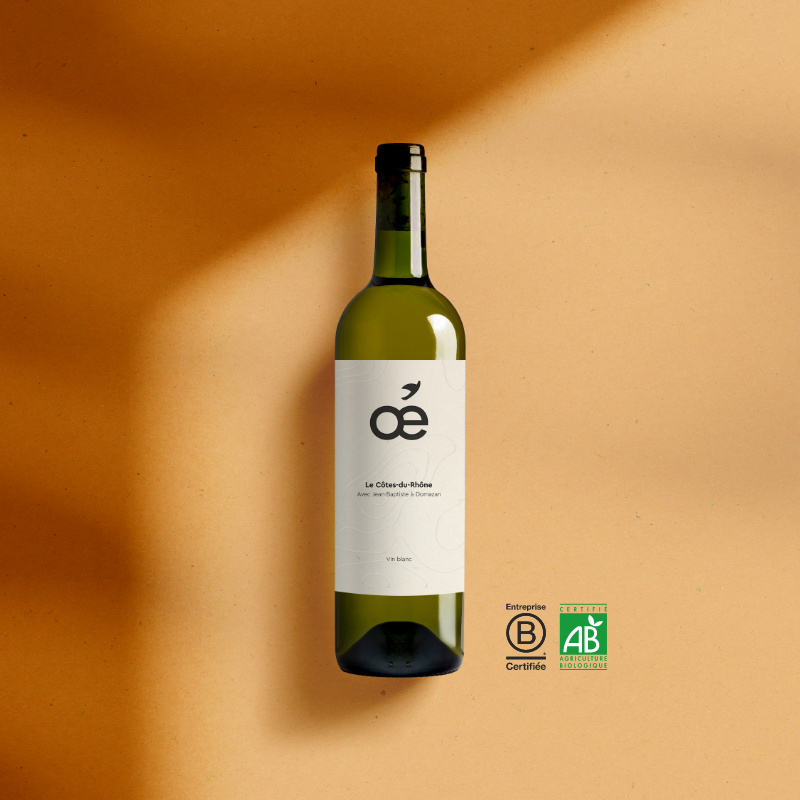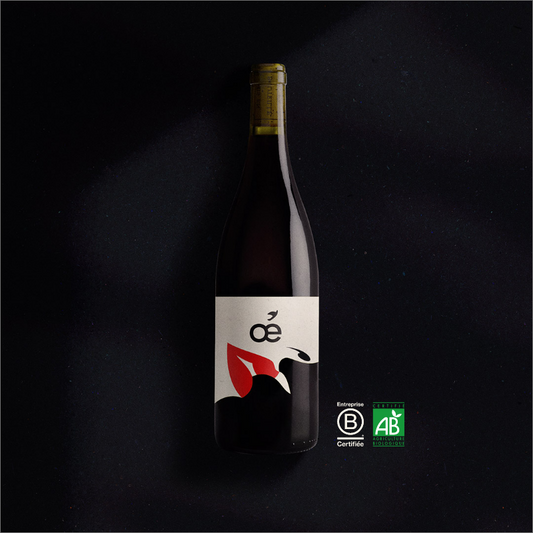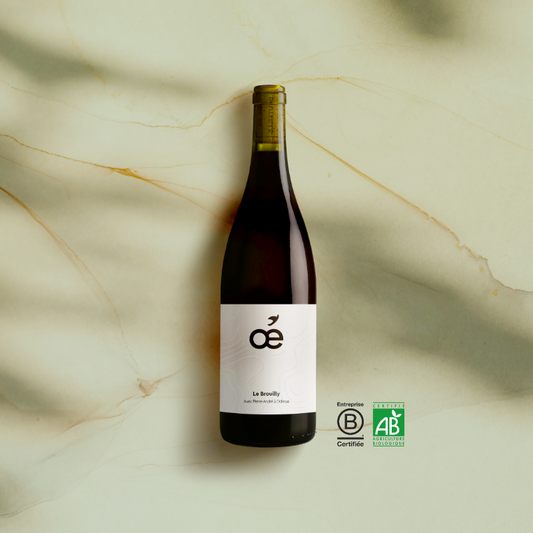Ah spring, the sky is blue, it's the season for lovers. After a winter's rest, nature gently wakes up like Sleeping Beauty, flowers bloom and birds sing. Idyllic isn't it? As you can see, at Oé, we really like spring. This season acts as a gentle awakening for crops, especially for vines. The winegrowers themselves are busy in their plots because the arrival of spring often rhymes with more work in the plots. And yes, we must help the buds which will allow the grapes to develop well and take care to maintain the land and the vine . We give you a brief overview of the activities carried out in the vineyards during the season, here we go!
Soil maintenance in the spring
The beginning of the vine stocks
Spring amazes us and gives us the opportunity to see beautiful things. The sap of the vine which had accumulated in the roots to survive the cold goes up and comes out through the scars left by winter pruning : we says that the vine cry. The winegrowers understand that spring is here, that nature is returning and that tilling the soil can begin.
In winter, we mounded the vines, that is to say that we covered the feet with earth to protect them from the cold. In the spring, even if it is necessary to remain vigilant to episodes of frost, the soil can be removed from the vines and distributed between the rows of vines. This operation is called debuttage or heaving.
Weeding on the plot
With spring, greenery develops in crops. And care must be taken not to let weeds take hold. The weeds are weeds, plants that grow in crops without having been grown there and which compete with cultivated plants. In conventional agriculture, to save time, chemical weeding is often used, while in organic farming, the winegrower uses only organic or natural products. Other alternatives are possible such as:
- Mechanical weeding, who consists of removing weeds using tools such as a hoe or a hoe.
- Weeding by animals . They are putting the wire to the paw to help the winegrowers. This is the case with the sheep with which we practice the sheep. It is a natural mowing made by sheep to replace petrol or electric mowers and which does not pollute.
- scratching is superficial plowing which aims to remove weeds by aerating the soil and preventing the proliferation of parasitic plants.

To fight against plant parasites, fungi such as mildew or powdery mildew and animal parasites such as phylloxera , the Oé winegrowers use alternatives that are more respectful of the environment. Against fungi, copper or sulfur are allowed in organic farming. To fight against parasites, we give pride of place to the biodiversity and insects crop auxiliaries which naturally reduce species harmful to the vines.
Grass cover at the foot of the vines
In addition to weed control, the winemaker adds good ground cover between the rows of vines: weeding. This technique strengthens the plot and promotes the development of biodiversity. The grass uses water and nutrients to benefit the vines. Care must be taken, however, that these herbs do not deprive Vine of its resources.
Other soil maintenance work in the vineyard
There are a multitude of other works to maintain the soil when spring arrives. We dig the ground to remove useless roots, we plant new vines to replace the dead vines that have been uprooted before. Add to the soil green manures such as cereals, clover or fodder radishes for example to promote soil fertilization .
Do you want to know more about soil maintenance in organic viticulture? It's this way !
Work in the vineyard in spring
Spring marks the beginning of a new vegative cycle for the vine . The winegrower accompanies his vines throughout the season and until the end of summer for the harvest.

Bud burst and disbudding
In the vineyards, the first stage of spring is the bud burst . This is when the buds swell before new ones appear. twigs. Bud burst begins in April and continues through May. The buds are opening and the small leaves of the vine are appearing.
From May to June, the winegrower practices disbudding, also called suckering. This technique consists of pulling out the “greedy” branches by hand. These branches come from buds that have developed in addition to those left by pruning. These twigs do not bear fruit and can hinder the development of fertile twigs by requisitioning some of the sugars in the sap.
Contrary to what one might think, the good vine growth depend on disbudding. By removing these useless branches, the winegrower gives all these chances to good branches to give good bunches of very ripe grapes. Too much foliage is also avoided so that the sap nourishes the bunches as well as possible. The vine is all about strategy!
Trellising in the vineyard
Throughout the growth of the vine, the winemaker ensures that it develops in the best conditions. He practices what is called the trellising . We raise the vine shoots and they are tied horizontally on iron wires to properly maintain the branches. This step airs the vine and helps it grow properly because it grows in height and benefits from a perfect sun exposure . Grapes develop in height and facilitate the work of the harvest if they are done mechanically. By harvesting the vines at height, the tractors preserve the vines. And yes, our winegrower friends think of everything.
Trellising is usually done in April and May. The winemaker guides the growth of the grapes throughout their blossoming. These steps can be broken down into three parts:
- The attachment, where the winemaker ties the oath to the lowest trellising wire to channel its growth,
- The joining unfolds as the vine grows. The vine is placed against the trellising wires so that it develops correctly,
- lifting, the vine becomes a liana around June and needs help to channel its growth so that it does not go off in all directions. The branches are slipped between the wires of the trellising.
Trimming and stripping
After trellising , it's the turn of the trimming . This step consists of cutting the ends of the branches so that the nutrients of the vine like the sap , can concentrate on the clusters and not on the ends of the branches. Smart isn't it? By cutting these superfluous extremities, we ensure good ripening of the grapes. Trimming also avoids shading the vines too much and promotes their sunshine. It would be a shame not to practice it, what do you think?
In June, the winegrower gets down to stripping. He removes the leaves that grow at the height of the grapes. The removed leaves are usually positioned in the east, on the side of the rising sun. The clusters are airy, which favors sun exposure and facilitates the work of picking. This avoids exposing the bunches too much to diseases because gray rots first develop on the leaves. What good sides!
Fruit set
For the winemaker, the best time of year is bloom. This is when the hard work done all year pays off, both literally and figuratively. As they bloom, the flowers lose their first flower caps and then turn into fruits, this is called the fruit set . The grapes can begin their development. It is also during this period that we will be able to begin to determine the date of the future harvest. Do you want to know how the harvest is done in organic viticulture? It's this way !

On the winery side, the fine weather that is coming is pushing producers to organize open cellars. Open cellars? Yes, it's like the traditional open doors but in the cellars. Generally the fermentations, including malolactic ones, are finished and the spring vintages can be bottled.
In the vineyards , for now, it's time to let our grapes reach maturity. A maturation that will continue all summer. We will tell you more in our next article on the seasons.







